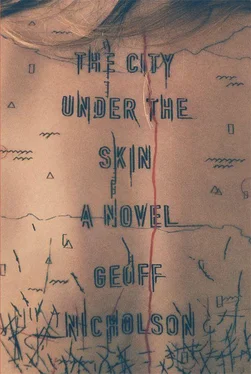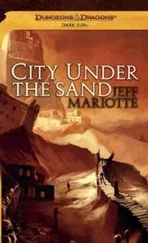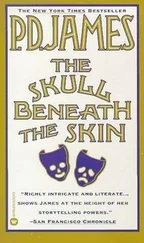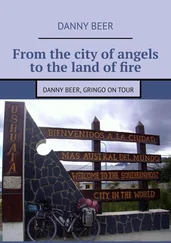“So we now know the guy’s name: Wrobleski,” she said. “And you say he’s a customer of Utopiates.”
“Yes, a collector.”
“Is that why he wants these women? Could it be that simple?”
Zak grunted.
“Okay, maybe that’s not simple at all,” said Marilyn. “And he didn’t recognize you, why? Because you’re a nobody as far as he’s concerned?”
“Right,” said Zak.
“But if he ever comes in the store again, he’ll definitely recognize you. God knows what happens then. And Billy Moore did recognize you, he must have, but for some reason he pretended not to. But it seems he’s just a nobody too, just a guy whose job it is to bring these women to Wrobleski.”
“Sometimes being a nobody has … advantages,” said Zak.
“At least the women seemed to be okay,” said Marilyn. “Well, as okay as you can be when you’ve got tattoos across your back, when you’re being kept in a compound by some blubbering weirdo, and you’re being paraded naked in a conservatory.”
“Yep, these things … comparative,” said Zak.
He looked out of the windshield through one half-closed eye, couldn’t make out where they were.
“Where are we going?”
“Back to my place,” said Marilyn.
“In other circumstances that would make me so happy,” said Zak.
“I think I might still be able to make you happy, Zak. Once I’ve done my stuff with tweezers and rubbing alcohol.”
“Where … you live?”
“I live in a squat,” said Marilyn.
“Yeah?”
“In a hotel. The Telstar. You know it?”
“Everybody knows the Telstar.”
* * *
Like Wrobleski, like many others, Zak was inclined to think of the Telstar as “that place that used to have the revolving restaurant.” More correctly it had had the Canaveral Lounge, a space-themed bar up on the twenty-third floor that had delivered a complete panorama of the city, 360 degrees, every sixty minutes. It had stopped revolving a long time ago.
The Telstar Hotel was, or at least had been, an optimistic statement in steel, tinted plate glass, and exotically colored concrete, an embodiment of 1960s ideals and design tics, with grounds that took up most of a city block. Its base was a four-story chunk with walls that flowed and ribboned, and rising from one corner was a tower, a little too short to be considered genuinely phallic. From directly above, in outline, in aerial photographs, or on a map, the effect was of an amoeba and its off-center nucleus, or perhaps, according to some, a fried egg. Inside, the vestibule had looked like a psychedelic planetarium; the honeymoon suite resembled NASA headquarters; in the basement there was an Op Art disco with floor-to-ceiling aquariums.
Critics, of which there were plenty, said it was too cool a building to remain cool for very long, and they were dead right. When business slackened, when room occupancy fell, when the conference trade evaporated, the place came to seem very old hat, and stilling the revolving restaurant was the first, all too symbolic, money-saving measure. But it wasn’t nearly enough. The Telstar had been closed and shuttered for the best part of a decade now, but it wasn’t quite empty or uninhabited.
Even before Mayor Meg Gunderson came into office, there had been ambitious, if amorphous, plans to revivify the place, to turn it into apartments, or a college, or a museum, or some combination of the three. There had always been other plans, of course, to demolish the damn thing. After it had sat empty for a few years, as the early discussions reached stalemate, a group of politicized, leaderless squatters occupied the building. They called themselves the Homesteaders: part Woody Guthrie, part Road Warrior, radical, anarchic, surprisingly media savvy. They moved in with their many children and dogs, and started holding press conferences. Speeches were made about social control, homelessness, deprivation, corporate evil: it played pretty well.
Meg Gunderson was mayor by then, and she stepped in and organized a provisional compromise. Utilities would be reconnected to the hotel (though not enough to spin the Canaveral Lounge), and the squatters could remain so long as there was no trouble, until a final decision had been reached about the Telstar’s future development. They were still waiting.
Naturally, Zak had thought about the Telstar as a suitable object for his urban explorations, but he’d been deterred by a number of things. First, it was said the place was a death trap: walls, floors, staircases were all likely to collapse under the weight of the naïve infiltrator, but Zak rather doubted that. The mayor was hardly likely to let the squatters stay there if the building was going to kill them. He had been more inclined to believe that the squatters themselves were the real threat. It was said they were a fighting, feral bunch. True, that didn’t square with what he knew of Marilyn, but perhaps that was only an indication that he knew nothing at all. Then the last time he’d scouted the perimeter fence, there was an armed guard with a sorrowful, angry dog, though it was unclear to Zak whether the pair were there to keep the public out or the squatters in. He hadn’t investigated. As his excursion into Wrobleski’s compound had just proved, urban exploration was sometimes a lot more fun to contemplate than actually do.
Now Marilyn parked the station wagon half a block from a side gate of the overgrown hotel grounds, where a different security guard and his hound stood sentry. Marilyn walked up to the guard, said, “How’s it going, Bob?” pressed a couple of bills into his hand, and patted the dog. Bob looked at Zak, at his distorted face, speckled with blood and cactus spines, and decided it was none of his business.
“Can’t complain,” Bob said, as he opened the gate and waved Marilyn and Zak inside.
Marilyn took Zak’s hand (he liked that) and guided him through the obstacle course of the grounds, scattered with concrete buttresses, barbed wire, giant buddleia, a blackened school bus. They got into the hotel via a rear service entrance, passed through buckled metal doors into a long corridor, patchily illuminated by a line of bare bulbs hung from the ceiling like decaying fairy lights. The corridor led past cavernous, festering kitchens, skirted furnaces that resembled the innards of some scrapped steamship, past a giant laundry that was now a shantytown of stacked gray linens. The corridor walls were scorched with graffiti: grinning robots, dwarves with oversized genitals, political slogans— It’s the Insurrection, Stupid. At the far end there was a small, solid pool of light and an emergency generator adjacent to the rusted doors of a freight elevator. They encountered nobody, though Zak thought he could hear a band rehearsing somewhere up above.
“Want to risk the elevator?” Marilyn asked. “It’s a hell of a climb otherwise.”
In his punctured state, Zak didn’t want to risk anything whatsoever, but he wanted to climb even less. He found himself in the elevator, a makeshift and decrepit thing. Marilyn punched a set of numbers into a keypad in the wall, and they began a rattling ascent, up through a great many floors until the cage stopped with a shudder. The doors opened, a good two feet below the level of the floor outside, and Zak, stepping up and out, stared blearily into a strange slice of shadowy, glass-walled space. They were at the very top of the hotel, inside the Canaveral Lounge, the unrevolving revolving restaurant.
“Oh God,” Zak groaned. “Now I’m in an alternate universe, right?”
The Canaveral Lounge said sixties all right, though it spoke in a stuttering, muted fashion. There were plastic pods and blobs, white egg-shaped chairs, though all the plastic had crazed and developed a pale yellow patina. On the floor, the carpet showed a pattern of stars and planets, seen through a veil of plaster dust. The walls were decorated with memorabilia that looked authentic enough: tattered flags and banners, portraits of alarmingly youthful-looking astronauts, sections of charred rocket fins and satellite housings. There was a map that Zak, even in his present state, recognized as a lunar landing chart for the Sea of Tranquillity, still visible through cracked glass that had developed a thin film of mold.
Читать дальше












